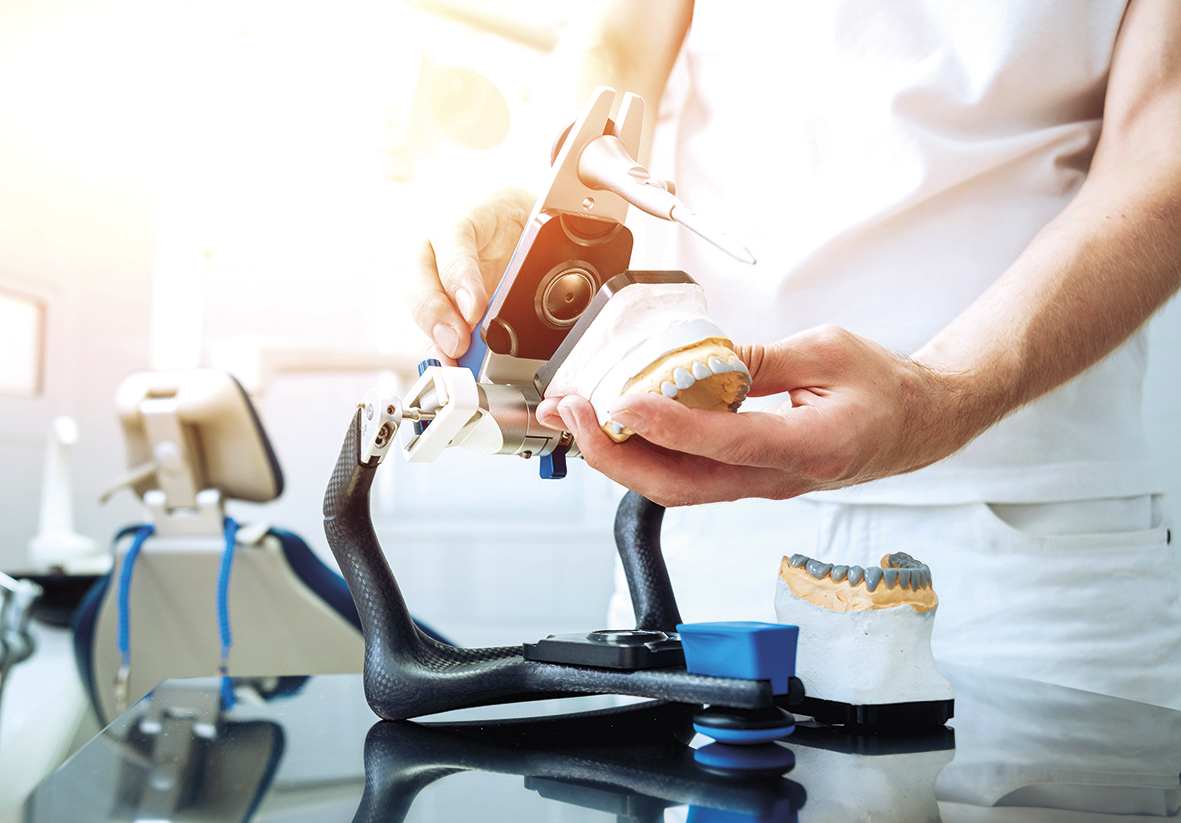ARTICULATORS – ASHLEY BYRNE (BYRNES DENTAL LAB) Leave a comment
Articulators are a key part of any dental lab but with so many types and brands it can sometimes be tricky to choose the right one. Here at Byrnes dental lab we have around 10 different types, all from different companies, but we have our favourites. When I first started in dental technology some 20+ years ago I was using a simple hinge articulator but apart from simple additions or repairs, these basic hinges types do not replicate the jaw in any way or form.
Modern artics are now really divided into two areas, analog plaster articulators or small digital artics that are used with printed models. These small almost simple hinge looking articulators are actually a small bit of design genius. iTero and 3Shape dominate the market with these types of articulator that do offer the hinge opening but also have springs that allow lateral and protrusive/retrusive excursions. For small restorations these simple articulators allow all the correct movements and both companies readily allow use of their .stl file with which is easy to add to the model design and print them. By using the .stl files from iTero and 3Shape no plaster is needed so it is a fast and simple solution, however these articulators are not perfect. Due to the small and somewhat basic design, no face bow can be used and the angles of excursions do not mirror the same angles we see in the mouth. For this, we need to look at semi and fully adjustable articulators. Whilst many academics would say a fully adjustable articulator is ideal, it is still incredible difficult to accurately and easily transfer the data from the mouth to the articulator. We do own a fully adjustable articulator but I have not set one up for over 15 years now and I doubt I will ever use it again. There’s a £2,000 investment we regret!
At Byrnes we use semi adjustable articulators for nearly all our stone casts and also for our complex digital cases. Facebows are a popular and easy way to take a record of the condyle position and then roughly transfer that to the articulator. Most of our clients use Denar face bows but we do not tend to use the Denar articulator. Most leading articulator brands tend to offer a transfer jig so other companies face bows can be used. The Kavo Protar articulator is our go to system at Byrnes. The articulator has a Denar face bow transfer jig as well as Kavo producing its own face bow. The articulator is accurate, easy to use and has a huge amount of room around the models which makes both crown and bridge and denture work an ease. It can sit at 45 degrees so when working its a lovely ergonomic piece of kit to use and the top part of the artic has a pin which allows the top to be fully opened and won’t tip or drop off the articulator. Two simple sliding catches switch it from a fixed to excursive movements. The team have found this one of the most user friendly systems we have used to date. The Protar has also been clever in its use of the base plate. These can be poured in the lab using a small magnetic disc and a mould as well as offering various plastic base plates which all helps to keep the costs down. Picking an articulator is very much down to personal choice but quality, accuracy and ease of use and the ability to service the artic through wear and tear is key as well, which the Kavo system offers for us.
My advice would always be to look at the key brands and don’t scrimp on a cheap system as this can often come back and bite you through adjustments, remakes and even loss off technical time from using a poorly designed system. A good system will see you through years if not decades if looked after well.





